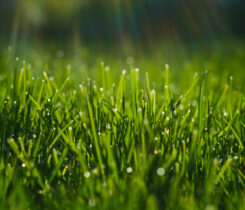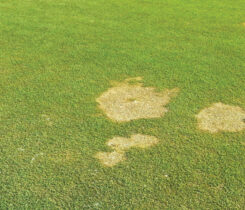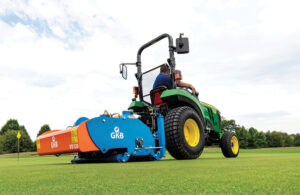A look at the USGA’s new standard for measuring organic matter on greens
Managing organic matter is crucial to ensuring the best putting green a golf course can offer. Until recently, however, there was no real way to accurately measure the right amount of any given green needs.
Enter the United States Golf Association (USGA), which released its new standard for measuring organic matter on putting greens.
“It’s another metric that will help (superintendents) understand their putting greens on a deeper level,” says Chris Hartwiger, USGA director of agronomy. “This is going to bring the industry together, where we’ll all be working off of one test. It’s going to be good for researchers and the superintendents.”
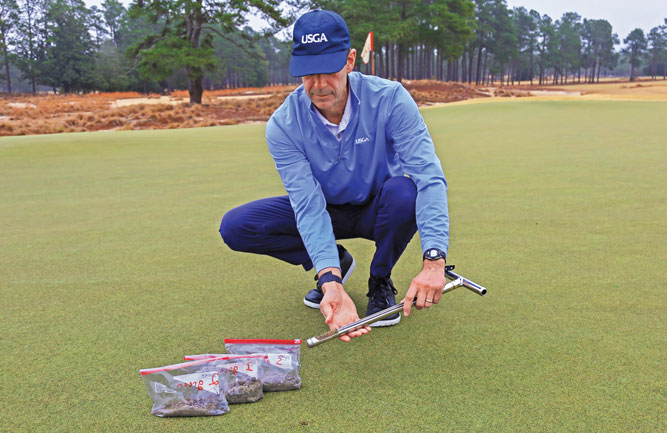
The USGA hopes its new testing method will bring consistency to putting green surfaces across the country. (Photo: USGA)
The next step for the research team is to create an American Society of Testing Materials standard by which all labs will utilize the same procedure for surface organic matter determination.
“If you’re going to manage something, it’s better to have an assigned value,” Hartwiger says. “You can actively manage and see the progress you’re making. If we can’t measure something like organic matter, how do you know if your cultural programs are actually successful?”
“This is an extension of the USGA’s desire to be involved in the long-term success of putting greens,” Hartwiger says. “So, in order to tackle this, we assembled a working group of turf researchers, and their first assignment was to go out and do a literature review and find out the tests that were being used and where we might have gaps in our knowledge base.”
After finding those gaps, the research team — comprised of Doug Soldat, Ph.D., from the University of Wisconsin, Jim Murphy, Ph.D., from Rutgers University, Roch Gaussoin, Ph.D., from the University of Nebraska and Doug Linde, Ph.D., from Delaware Valley University — recommended the following:
- Sample depth: Superintendents should take samples from a depth between 0.8 to 1.0 inches.
- Sample probe size: Superintendents can take samples with any probe diameter of 0.75 inches or larger.
- Number of samples: The research team found that superintendents should take at least five samples to provide an accurate estimate of surface matter. The researchers found no advantage in collecting more than ten samples. Superintendents should take samples from at least 30 feet away from each other.
- Sample timing: The USGA recommends superintendents take samples at approximately the same time each year.
For more information on the USGA’s new testing method, visit USGA.org.

Brad Aldridge
John Deere
Brad Aldridge
Golf Reel and Rotary Mowers Product Manager
Thatch control is important as it helps improve the greens’ firmness, smoothness and consistency, which are the playability aspects that golfers value on the course. To help control thatch on greens, a superintendent can develop a regular verticutting and topdressing program. John Deere offers vertical mowing reels for its triplexes, which aid in the removal of thatch from the playing surface. We recommend regular verticutting to get more aggressive with slicing rhizomes and stolons, as this helps to promote new vertical growth and less lateral growth. Another highly encouraged way to contend with thatch is to perform frequent, light topdressing. Many courses are now going once a week to incorporate sand into the canopy in small increments. Additional brushing also helps work it into the course seamlessly. While not performed as often as the rest, but still very important for turf health, aeration is always an important practice to keep thatch off the golf course.
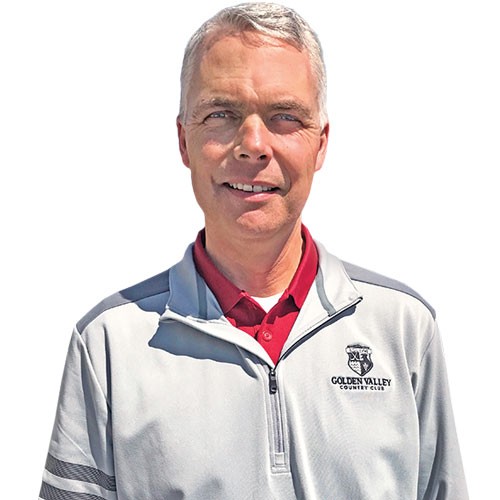
Jeffrey Ische
Toro
Jeffrey Ische
Senior Product Marketing Manager for Aeration Products
Thatch control is essential for maintaining the high-quality appearance and playability of a golf course. Similar to a sponge, thatch holds excess water above the soil surface. This results in softer playing conditions and a higher likelihood of disease incidence. When the thatch layer does dry out, it often becomes hydrophobic, leading to problematic localized dry spots that are difficult to rewet. Additionally, mowing areas with excess thatch can lead to a scalped look and an overall poor after-cut appearance. Depending on the aggressiveness one wants to take, there are multiple ways to manage thatch accumulation or remove it. If the current amount of thatch is acceptable, additional accumulation can be limited by managing fertility inputs and incorporating a sand topdressing program to help dilute what is there. If removal is necessary, this can be accomplished in small amounts with hollow-tine aeration, more aggressively with a tractor-powered verticutter, or complete removal with a fraise mower.
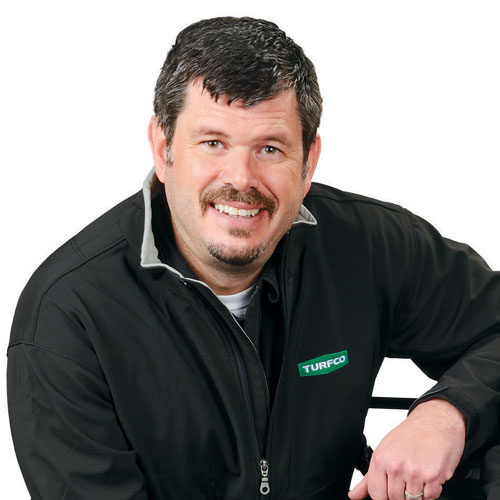
Scott Kinkead
Turfco
Scott Kinkead
Executive Vice President
What superintendents traditionally do is topdress and sometimes aerate. What you’re doing with the topdressing is helping it integrate to maintain and control that organic matter. Doing aeration or linear aeration and frequent top dressing can help you control thatch so that you don’t get over four percent in organic matter, which might start impacting play.
There are a lot of interesting discussions about the right rates of topdressing applications for thatch management. Now that (the USGA) is coming up with more of a standardized way to calculate your applications or calculate the amount of organic matter, superintendents can start getting more specific with managing organic matter without doing more than needed and disrupting play. There are a lot of different ways to manage it, and I think what people are trying to figure out is, what’s the right amount for my course? Because each course is different.
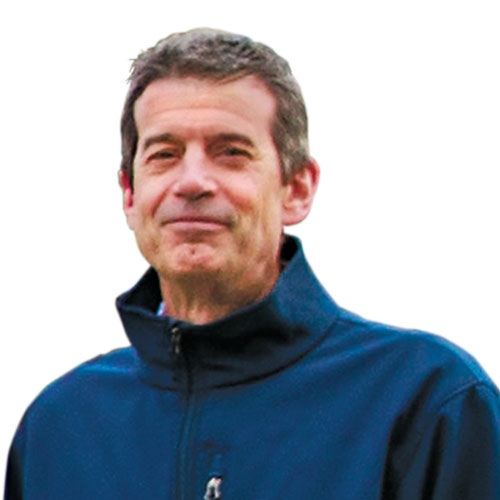
Chris Hartwiger
USGA
Chris Hartwiger
Director of Agronomy
Historically, in this industry, a lot of things are done by feel or intuition. We know intuitively that top dressing will dilute organic matter because it’s mixed in with it. And we know that when we pull out an aeration core, we’ve taken some organic matter out. The question then comes, if we’ve got excellent greens, how much sand do we need to apply over the next year so that we can come back at the same time and have the same conditions? How much, if at all, do we need to aerate? How much nitrogen do we need to add so that we provide the grass with some fuel to recover from traffic and stress, but not so much that it builds up organic matter more than we want? We do a lot of these things by feel, by tradition or by general recommendations. Yes, you should lightly top dress your putting greens every seven to 10 days or you should aerate once or twice a year. But we don’t have a level of specificity that I think anybody would desire. So, step one is we need to be able to assign a number to this organic matter level.









